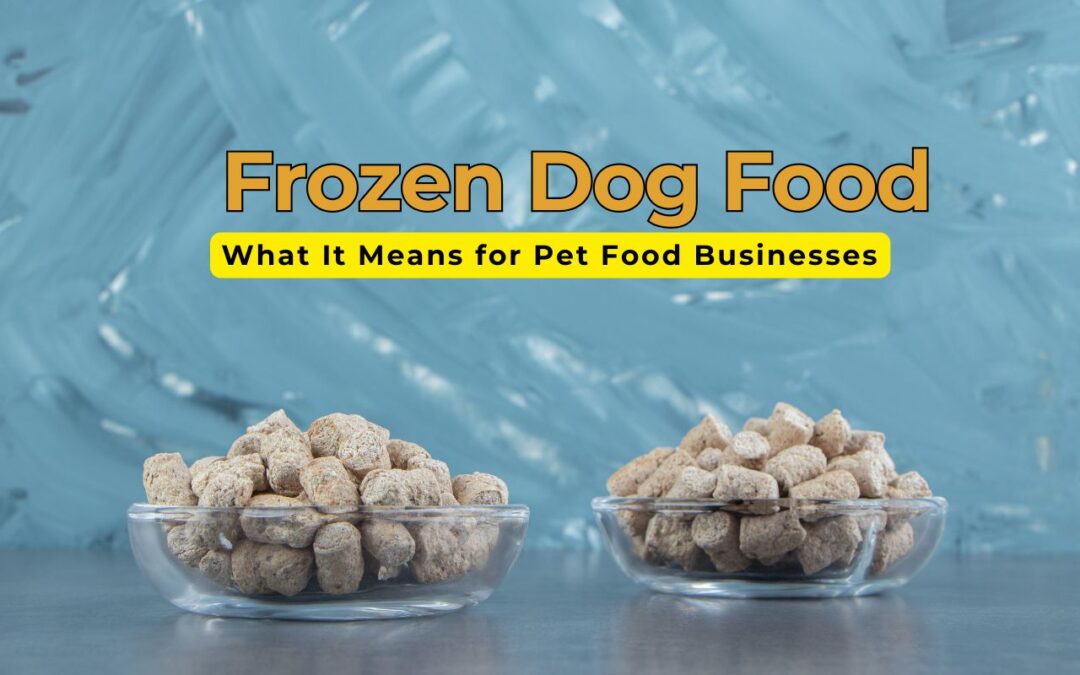The pet food industry is undergoing a significant transformation, driven by evolving consumer preferences and a heightened focus on pet health and nutrition. Among the most notable trends is the surge in demand for frozen dog food—a category that combines the nutritional benefits of raw feeding with the convenience of modern packaging and distribution. This shift presents both opportunities and challenges for pet food businesses aiming to capitalize on a market that is increasingly prioritizing quality, transparency, and innovation.
Understanding the Frozen Dog Food Market
Market Overview
The global frozen pet food market is experiencing robust growth, with projections estimating its value to reach approximately $9 billion by 2030, up from $5.8 billion in 2023. This expansion is fueled by a growing segment of pet owners who view their pets as family members and are willing to invest in premium nutrition options.
Key Drivers of Growth
- Humanization of Pets: A significant factor propelling the frozen dog food market is the increasing tendency of pet owners to treat their pets as integral family members. This perspective leads to heightened expectations regarding the quality and nutritional value of pet food, mirroring human dietary standards.
- Demand for Natural and Organic Ingredients: Consumers are increasingly seeking pet food products that are free from artificial additives, preservatives, and fillers. Frozen dog food often meets these criteria, offering formulations with recognizable, whole-food ingredients.
- Advancements in Freeze-Drying Technology: Technological innovations have improved the freeze-drying process, preserving the nutritional integrity of ingredients while extending shelf life. This advancement makes frozen dog food more appealing to health-conscious consumers.
- E-commerce and Subscription Models: The rise of online shopping and subscription-based services has made it more convenient for pet owners to access frozen dog food products, contributing to market growth.
Market Segmentation and Consumer Preferences
Product Types
Frozen dog food products are available in various forms, including:
- Raw Frozen Meals: Uncooked formulations that aim to replicate a natural canine diet.
- Cooked Frozen Meals: Lightly cooked options that offer a balance between raw and traditional cooked diets.
- Freeze-Dried Options: Products that have undergone freeze-drying to remove moisture while preserving nutrients.
Ingredient Trends
There is a noticeable shift towards incorporating diverse protein sources, such as fish and duck, to cater to pets with specific dietary needs or allergies. Additionally, the inclusion of superfoods and functional ingredients aimed at promoting joint health, digestion, and coat quality is becoming more prevalent.
Packaging Innovations
Sustainable and convenient packaging solutions are gaining traction. For instance, the use of Tetra Pak cartons made from Forest Stewardship Council-certified paperboard offers an eco-friendly alternative to traditional packaging, reducing environmental impact and appealing to environmentally conscious consumers.
Opportunities for Pet Food Businesses
Market Expansion
Emerging markets, particularly in the Asia-Pacific region, present significant growth opportunities due to increasing pet ownership and rising disposable incomes. For example, India’s frozen pet food market is projected to grow at a CAGR of 6.1% over the next decade.
Product Diversification
Developing specialized frozen dog food products that address specific health concerns, such as weight management or food sensitivities, can help brands differentiate themselves in a competitive market. Offering tailored meal plans and portion-controlled options can also cater to the personalized needs of pet owners.
Strategic Partnerships
Collaborations between pet food manufacturers and retailers can enhance product visibility and accessibility. For instance, partnerships that facilitate the distribution of frozen dog food through established retail channels or direct-to-consumer delivery services can expand market reach.
Challenges Facing the Industry
Supply Chain and Logistics
Maintaining the cold chain for frozen dog food products is logistically complex and costly. Ensuring consistent temperature control during transportation and storage is critical to preserving product quality and safety.
Regulatory Compliance
Navigating the regulatory landscape for pet food, which varies by region, requires significant investment in quality control and compliance measures. Adhering to stringent safety and labeling standards is essential to gaining consumer trust and avoiding legal complications.
Market Competition
The frozen dog food market is becoming increasingly saturated, with numerous brands vying for consumer attention. Differentiating products through unique value propositions, such as ingredient transparency and health benefits, is crucial for standing out in a crowded marketplace.
Strategic Recommendations for Businesses
- Invest in Research and Development: Continual innovation in product formulations and preservation techniques can help meet evolving consumer demands and maintain a competitive edge.
- Enhance Consumer Education: Providing clear information about the benefits of frozen dog food, proper storage practices, and feeding guidelines can alleviate consumer hesitations and foster brand loyalty.
- Focus on Sustainability: Implementing environmentally friendly practices in sourcing, production, and packaging can appeal to eco-conscious consumers and contribute to long-term brand sustainability.
- Leverage Digital Platforms: Utilizing e-commerce and social media channels for marketing and distribution can increase product accessibility and engage a broader customer base.
Conclusion
The rise of frozen dog food reflects a broader shift towards premiumization and health-consciousness in the pet food industry. While the market presents substantial growth opportunities, success requires navigating logistical challenges, regulatory complexities, and intense competition. By focusing on innovation, sustainability, and consumer engagement, pet food businesses can position themselves to thrive in this dynamic and evolving landscape.













